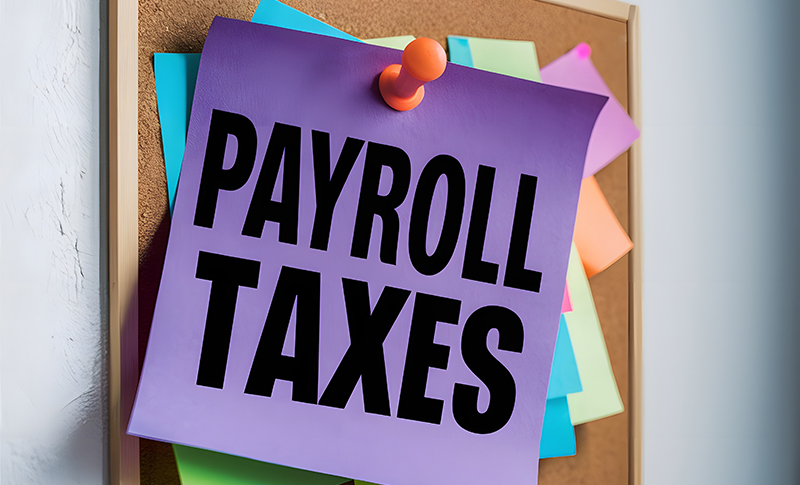Trump and our taxes
December, 09 2016 by Steve Banner, EA, MBA
Now that the dust has settled on the 2016 election campaign, it’s time to look forward to what 2017 has in store for us all. While both major candidates proposed reforms to many areas of policy, including taxes, it will soon be up to President-elect Trump to put his words and position papers into action.
With the control of both chambers of Congress remaining with the Republican Party, the new president will be in a strong position to quickly begin to make his mark on the nation. Indeed, that seems to be the plan, as Mr. Trump has listed a series of major changes and reforms that he aims to make during the first 100 days of his presidency.
Included in the list, along with legislation affecting immigration and healthcare, is the Middle Class Tax Relief and Simplification Act, which would bring the most sweeping changes to the Federal tax system since the days of President Reagan in 1986. While many of the finer details of Mr. Trump’s tax plan have not yet been released, the program is based in part on the vision of reducing taxes across the board for working and middle-class Americans. The Trump plan also aims to use the tax code to reduce the cost of childcare for families.
Along with aiming for the above goals, the plan would also simplify the tax code by eliminating the alternative minimum tax, and the 3.8 percent Net Investment Income Tax that was enacted among the provisions of the Affordable Care Act. Personal exemptions would be replaced by an increased standard deduction, and the Head of Household filing status would be eliminated.
For individuals, the plan would reduce the number of tax brackets to three instead of the current seven, and it would also reduce the top marginal rate to 33% instead of the current 39.6%.
The standard deduction for married filing joint couples would be increased to $30,000 (from the current $12,600). Low-income couples with combined gross incomes of less than $30,000 would thus pay zero tax.
A joint-filing couple with a combined gross income of $60,000 would pay $3,600 in tax under the Trump plan, compared to $4,948 projected by the existing 2017 tax tables, a difference of some 37 percent.
The Trump plan addresses child and dependent care costs by allowing taxpayers to deduct from gross income the cost of eldercare for a dependent, and children under age 13. Details remain incomplete, but the deduction for child care will be capped at the state average for the ages of the children concerned, and at $5,000 for eldercare. The plan also expands the definition of eligible caregivers to include stay-at-home parents or grandparents. Taxpayers with income too low to allow them to benefit from this deduction would be able to receive benefits through the refundable Earned Income Tax Credit. Another proposed innovation would allow taxpayers to establish Dependent Care Savings Accounts for the benefit of specific individuals, including unborn children.
On the business side, the Trump plan would eliminate the corporate alternative minimum tax and reduce the business tax rate to 15 percent, down from its current 35 percent. Companies that have kept their profits offshore for fear of the high US tax rates would be encouraged by a one-time tax of 10 percent to repatriate such funds. Incentives would also be provided to encourage businesses to assist their employees with childcare costs and facilities.
As bold as the Trump plan may be in its conception, the implementation of any such plan is no easy feat – even when Mr. Trump’s party controls the balance of power in both chambers. In June of this year, the Republican Party leadership released its own comprehensive plan for reforming and simplifying the tax code. This plan shares similar goals to the Trump plan and includes many of the same proposals, such as reducing the number of tax brackets for individuals and eliminating the alternative minimum tax. However, the two plans differ on the matter of itemized deductions in that, although Trump’s plan limits itemized deductions to $200,000 for joint filers, the Republican plan has no monetary ceiling for itemized deductions and would eliminate all but home mortgage interest and charitable contributions.
After this 30,000 feet overview of the tax reform landscape, there remain two questions to be answered: when will tax reform happen and what will it look like?
Taking the second question first, it would seem that the competing proposals are so similar that it should not be inordinately difficult for the new President Trump to reach an agreement with his Republican fellows on the final content of a tax reform package that falls somewhere in the middle.
The more difficult question relates to the timing of it all. While Candidate Trump was very enthusiastic about enacting tax reform during his first 100 days in office, President-elect Trump has spoken much less on the subject. He has instead focused on reforms to healthcare, immigration, trade and environmental protections. This shift in focus may be related in part to pressures from congressional leaders to change his priorities, or perhaps because Mr. Trump has decided that tax reform is a less pressing matter than the other issues that deserve more immediate attention. But whatever the reason, it would appear we will not see much movement on the matter of tax reform until after the Spring. However, when that ball starts rolling, it could gather speed very quickly and make the 2017 tax year look like something we have not seen for a very long time.





